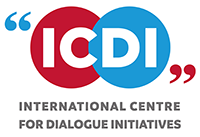Sanctions have, unsurprisingly, become a prominent feature in the international response to Russia’s full scale 2022 invasion of Ukraine. These measures, implemented by over 40 countries, including the United States, the European Union United Kingdom and Canada, aim to exert pressure on Russia to end the war, deter further breaches of international law, and safeguard Ukraine’s territorial integrity. Understanding of how sanctions can serve as leverage in supporting diverse policy aims, including in peace agreements and security guarantees, remains limited. Policymakers often impose sanctions without sufficient consideration of how to use them as a bargaining chip in mediation processes or at what point of conflict cessation should they be adapted.
Despite the centrality of the policy instrument, evaluating the impact and effectiveness of sanctions remains a complex task due to the intricate nature of the conflict and difficulties proving cause and effect. What appears certain, however, is that sanctions are impeding Russia’s access to vital goods, financing and equipment needed to support its war effort and are likely to be slowing down the war machine. Furthermore, they continue to send a strong and political signal to multiple audiences: of condemnation to Russia; of support to Ukraine; of action to domestic audiences and a warning to other possible detractors of international norms and laws. Whether sanctions can bring about an end to the conflict is a less certain one. Sanctions are rarely the driving factor in bringing about major changes in behaviour in any given sanctions regimes and should not be seen as a silver bullet. Instead, they have been shown to play a useful role at different stages of a conflict, including in helping to forge and maintain ceasefires and peace agreements.
Sanctions as leverage in peace processes
Sanctions (and related export controls) imposed on Russia following its 2022 invasion of Ukraine have primarily focused on incrementally intensifying pressure on the Kremlin, constraining access to equipment required by Russia’s military-industrial complex, countering circumvention, and employing new legal mechanisms for enforcement. They also enter into new legal ground regarding the potential use of frozen assets to support Ukraine’s reconstruction and humanitarian assistance. On the other hand, discussions on the crisis tend to overlook the potential use of sanctions as leverage and their flexible application to achieve policy objectives, including a political settlement linked to conflict resolution. In the balance that sanctions have potential to play between “carrots and sticks,” the weight falls squarely in the latter category. This article addresses this gap, in drawing on prior research on sanctions as leverage and outlining possible approaches to using sanctions as part of a negotiated settlement, potentially connected to a future peace agreement and related areas such as security guarantees.
Leading sanctioning bodies, such as the United Nations Security Council (UNSC), EU, and US, demonstrate varied approaches to sanctions relief and leverage. The EU appears more inclined than the US to utilize sanctions leverage in diplomatic processes and negotiated settlements, while the UK and Canada, as relatively new actors in autonomous sanctions, have limited precedents for employing such actions. Moreover, strategic communications on the use of sanctions as political leverage is lacking among leading sanctioning powers. A flexible and streamlined approach to suspending and tightening sanctions – as well as clear communications on actions that must be taken for any adaptations to take place – could potentially encourage (or reward) desired changes in the target’s behaviour.
Lessons learned from studying previous sanctions regimes
The use of sanctions adaption as leverage in mediation relating to conflict resolution and the forging of peace agreements can be mobilised in relation to various criteria, including incentivizing behavioural change; encouraging parties to reach diplomatic agreements; stigmatizing specific activities; weakening support for particular groups; rewarding positive steps; signalling the end of conflicts, and improving diplomatic relations. Studies suggest that advantages of such an approach include the ability to employ conditionality; coordination among allied sanctions sending countries; adaptability to changing circumstances (e.g. the end of a conflict or even the reaching of a ceasefire); calibration based on concessions; reversibility (e.g. snapback of any sanctions easing should certain behaviours not be maintained), and the use of incentives and rewards.
This could take place at various points of the mediation and peace process, from: incentivising negotiations; reaching a ceasefire (including cessation of hostilities; withdrawal of troops/ disengagement; down-sizing of a military presence; disarming) and agreeing a peace agreement and maintaining it over time. Measuring success in this area requires further research, however, as success can be easily reversed, and tentative achievements may also be undermined by actions taken by the sanctioning party. Encouraging warring parties to return to peace talks may prove more feasible than reaching a comprehensive agreement, for example. Therefore, sanctions flexibility should be viewed as a strategy that plays a valuable role at specific stages of conflict resolution rather than a standalone solution.
Flexibility, incentives and coordination of sanctions remains key
Studies suggest that using flexibility in sanctions implementation can significantly contribute to mediation and peace processes, including incentivizing negotiations, securing ceasefires, reaching peace agreements, and maintaining long-term peace. Moreover, sanctions flexibility can contribute to providing a security guarantee for Ukraine, designed to safeguard the country from future aggression by Russia. In such a scenario, some existing measures could be temporarily suspended in relation to a broader peace agreement, with the condition of reimposing them if new attacks occur. Trigger events for imposing or reimposing sanctions should be clearly defined if they are to be deployed as part of an eventual security guarantee and/ or peace agreement.
Gaining a greater understanding of the use of sanctions as leverage in the Ukraine conflict should play a central role in the thinking of those involved in mediation and conflict resolution efforts. While employing sanctions as a bargaining chip may be unlikely given the severity of the situation, the unpredictability of President Putin’s decision-making, and limited trust between parties, some form of flexibility in sanctions enforcement is likely to play a role in an eventual peace settlement, potentially also linked to a security guarantee. Willingness to engage sanctions more proactively as a tool of leverage could be facilitated through coordinated efforts across governments and other organisations as part of a broader peace agreement. In sum, factors such as timing, coordination, communication, reversibility, and strategic combination with other policy processes will be crucial considerations in shaping the effectiveness of sanctions as a leverage tool in achieving peace in Ukraine.
Dr Erica Moret is an expert on sanctions and humanitarian affairs. She is Senior Researcher at the Global Governance Centre and the Centre for Humanitarian Studies at the Graduate Institute and coordinates the Geneva International Sanctions Network (GISN). She serves as an independent expert on sanctions and humanitarian affairs for the UN, EU and humanitarian organisations and has provided advice to the Biden Administration and both UK Houses of Parliament on sanctions-related matters.







